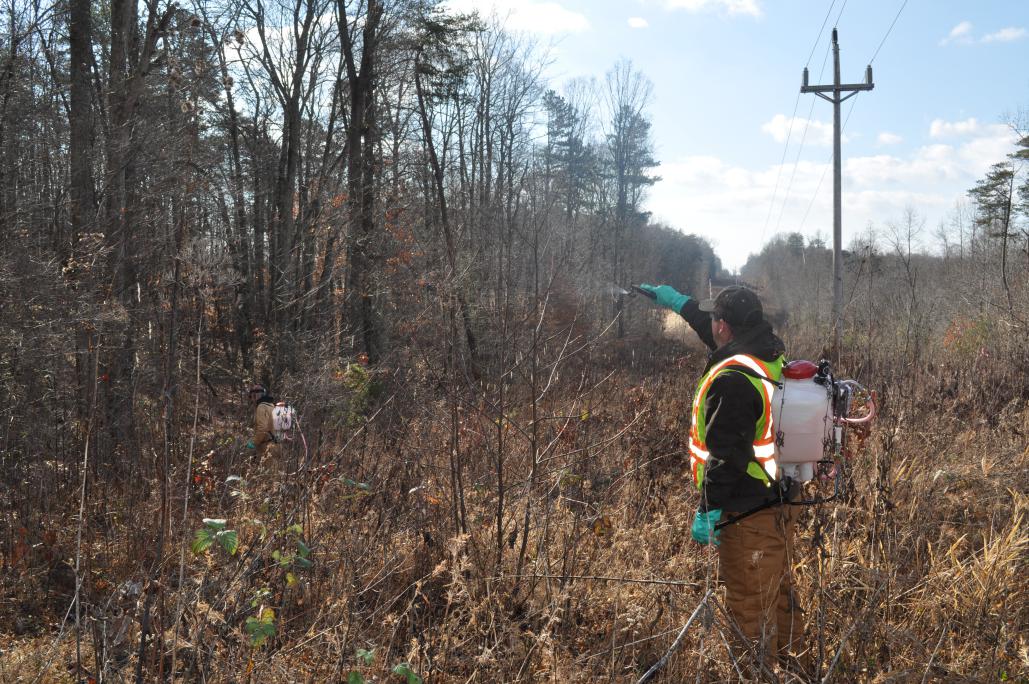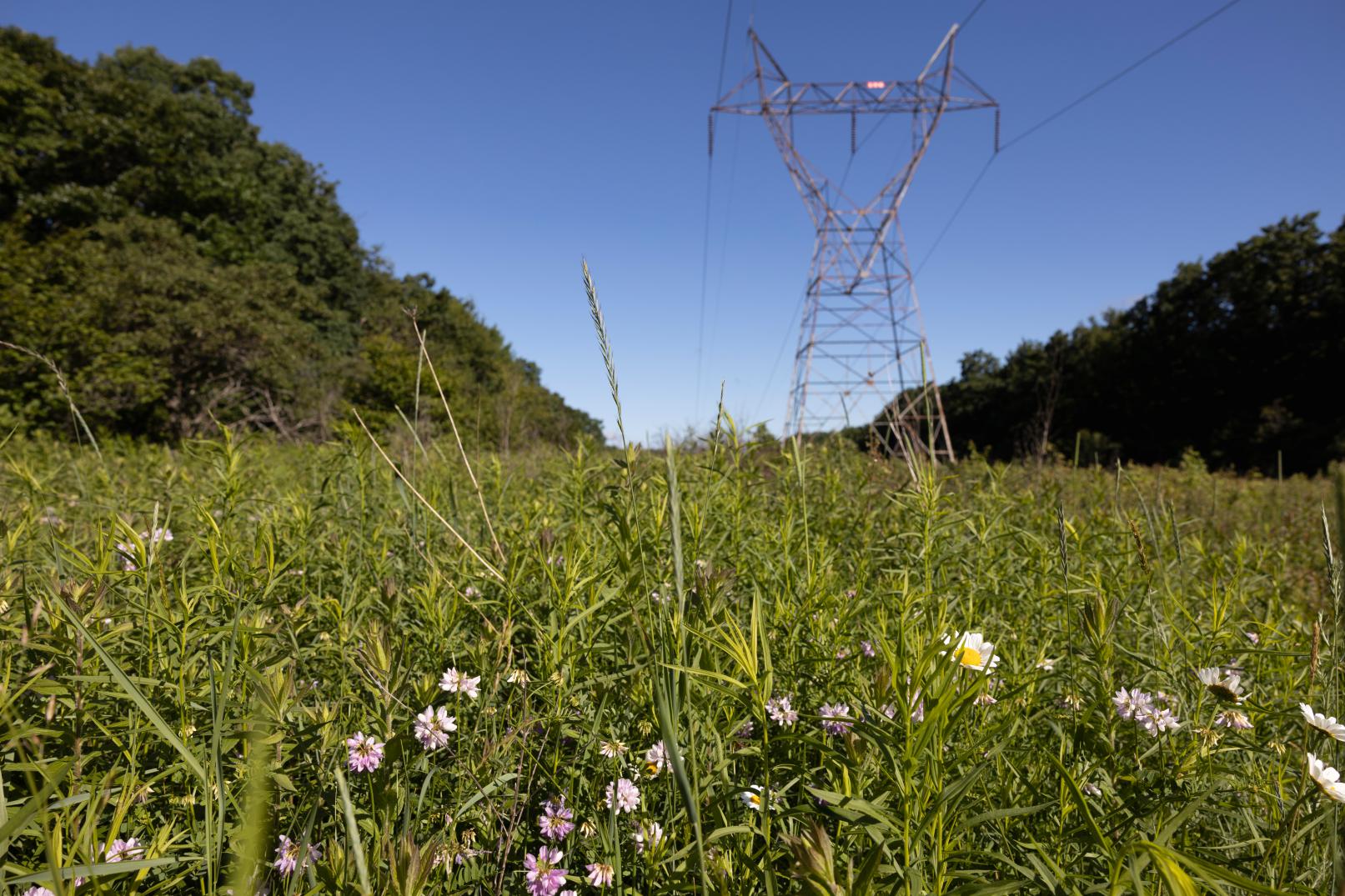Carbon Emissions and The Case for IVM
Given the opportunity to improve cost efficiency, biodiversity and their carbon footprint, utility companies must consider the positive impact of investing in Integrated Vegetation Management (IVM) strategies.
Given the opportunity to improve cost efficiency, biodiversity and their carbon footprint, utility companies must consider the positive impact of investing in Integrated Vegetation Management (IVM) strategies.
Utility companies are often scrutinized by landowners and public entities for their impact on the environment and ability to deliver reliable electrical service. Since vegetation management programs can influence these components of public perception, industry professionals have taken note of IVM strategies that can safeguard the integrity of utility infrastructure and simultaneously support environmental sustainability.
Decades of environmental right-of-way (ROW) research have detailed the economic and environmental benefits IVM practices provide over programs that rely exclusively on mechanical mowing practices for vegetation control. One of the most significant differences between these two strategies is the amount of greenhouse gas (GHG) emissions they produce.
The excessive release of GHG emissions causes a variety of issues for utility companies and their vegetation management partners, including:
According to the Environmental Protection Agency, burning a single gallon of gas produces 19.6 pounds of carbon dioxide (CO2), and burning a gallon of diesel fuel produces 22.38 pounds of CO2. This should concern all utility companies that currently use mechanical mowing equipment to control incompatible vegetation throughout their ROW corridors. That’s because carbon footprint studies conducted by Asplundh Tree Expert noted that 24 gallons of fuel were required to mow just 3.04 ROW acres — that equates to more than 175 pounds of carbon emissions per acre.
In other words, utility companies can expect to release nearly 9 tons of carbon emissions for every 100 acres they manage with mechanical mowing equipment. Countless practitioners have started using selective herbicide applications as part of an IVM-based approach to avoid these negative results, reduce their carbon footprint and enhance their public image.
Selective herbicide applications and other IVM practices allow applicators to control incompatible plant species and minimize damage to desirable plants otherwise impacted by nonselective control methods. While Asplundh research indicated that mechanical mowing requires eight times more fuel than high-volume foliar applications, low-volume foliar and basal applications require no fuel whatsoever. Cumulatively, these results yield multiple benefits for IVM programs, including:
Selectively controlling only incompatible vegetation supports the development of native plant communities composed of beneficial grasses and forbs, which are compatible with utility infrastructure as well as native wildlife. While native plant communities alone present a biological barrier against the reestablishment of incompatible plant species, they also welcome small mammals that add another layer of biological control by consuming woody brush seeds. This biological control lowers incompatible stem densities over time, which gradually reduces the need for fuel-guzzling mowing equipment.
“When you’re looking at the uses of gas, oil and diesel fuel from the mowers, that’s a lot of carbon that’s being output into the environment,” said Steve Hilbert, General Manager, Technical Services, Asplundh Tree Expert. “There’s tremendous opportunity if we have a mow-only program to change it over to IVM and help reduce that carbon footprint.”

While IVM programs provide clear benefits throughout utility rights-of-way, they also help vegetation managers improve annual resource management and landowner relations.
For instance, TerraVue® herbicide from Corteva Agriscience offers the industry’s most favorable environmental profile. TerraVue herbicide is powered by Rinskor® active, a reduced-risk herbicide that won the American Chemical Society’s Green Chemistry Challenge Award. In addition to controlling more than 140 broadleaf weeds and brush species, TerraVue herbicide can help vegetation managers minimize off-target control issues that otherwise decimate native plant communities.
Since applications of TerraVue herbicide and other IVM activities are structured to support the management of compatible and incompatible vegetation, they commonly qualify for ESG reporting when they prove to yield no net loss or net positive impact on biodiversity. Each utility’s corporate responsibility department can choose to report IVM programming quantitatively or qualitatively on the ESG indices of its preference.

The biodiversity sections featured in each ESG index support the development of a conservation framework that links IVM practices to quantifiable biodiversity metrics. They also report qualitative descriptions of habitat initiatives and their respective impact on the environment.
When asked about the opportunities that exist for energy companies to contribute to ESG reporting through their approach to ROW management, Lew Payne, ROW Environmental Manager with New York Power Authority, didn’t mince words:
“There are tremendous opportunities. In addition to the biodiversity aspect, we’re looking at the equipment we put out here. We’re also monitoring our fossil fuel usage and switching our strategies to limit our carbon footprint. All of this can roll up into ESG targets and increase education regarding our need to keep herbicides as a tool that can help us develop and maintain rich biodiverse habitat out on the ROW.”
To learn more about products, solutions and strategies that can enhance service reliability, environmental sustainability or ESG reporting for your utility vegetation management program, visit HabitatWithHerbicides.com.
Under normal field conditions, TerraVue® is nonvolatile. TerraVue has no grazing or haying restrictions for any class of livestock, including lactating dairy cows, horses (including lactating mares) and meat animals prior to slaughter. Label precautions apply to forage treated with TerraVue and to manure and urine from animals that have consumed treated forage. TerraVue is not registered for sale or use in all states. Contact your state pesticide regulatory agency to determine if a product is registered for sale or use in your state. Consult the label for full details. Rinskor® is a registered active ingredient. Always read and follow label directions.
For over 30 years, Vistas® has covered strategies, trends and stories from across the Vegetation Management industry.